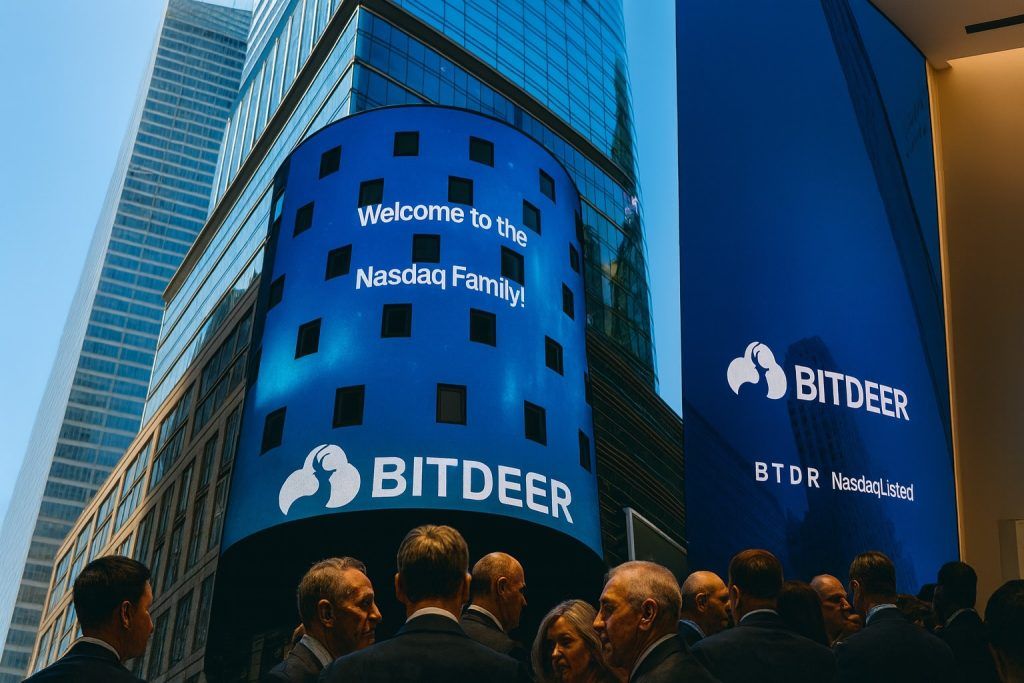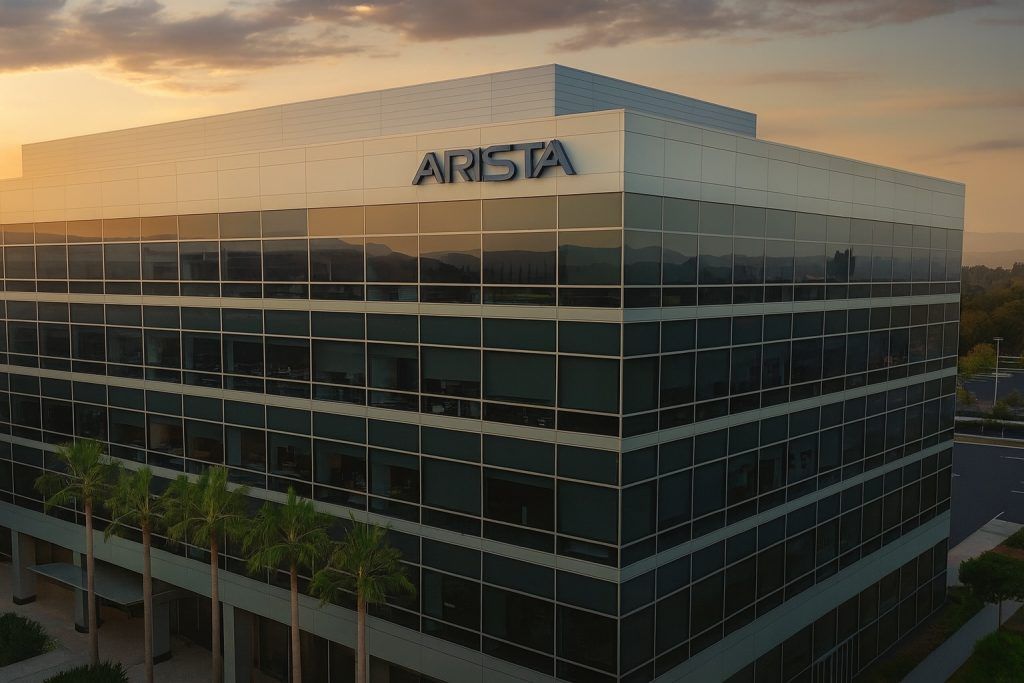Key Facts: As of Oct. 15, 2025, AMD (NASDAQ: AMD) stock is trading near $237 (up about 8.6% intraday) [1], continuing a blistering rally this year. The chipmaker’s shares have climbed roughly 80% year-to-date [2], far outpacing peers (the Philadelphia Semiconductor Index is up ~32%). The surge follows two blockbuster AI deals: on Oct. 6 AMD announced a 6-gigawatt GPU partnership with OpenAI (including warrants for OpenAI to buy ~10% of AMD) [3], and on Oct. 14 it unveiled a deal with Oracle to deploy 50,000 next-gen AMD GPUs in Oracle’s cloud superclusters [4]. Analysts have responded by lifting price targets: for example, Jefferies now targets $300 [5] (up from $200) and HSBC boosted its target to $310 [6]. About 60–65% of analysts rate AMD a Buy [7]. By contrast, NVIDIA (NVDA) still dominates AI GPUs (~94% market share) [8], and Intel is restarting its AI chip push (with new GPUs and a $5B Nvidia investment) [9]. Broad tech indexes are near record highs on AI enthusiasm [10], but rich valuations mean any slip-up could halt AMD’s ascent.
Stock Performance and Market Context
AMD’s stock is riding an AI-fueled tech rally. As of midday Oct. 15, shares hit $236.91, up 8.6% on the day [11]. This follows a 34% jump on Oct. 6 when AMD announced the OpenAI deal [12]. Year-to-date, AMD is up roughly 80% [13] (versus +40% for NVIDIA and modest gains for Intel). Its market capitalization is now around $350 billion, making AMD the third-largest chipmaker behind NVIDIA and Intel [14].
The broader market is also buoyant. U.S. stock indexes (S&P 500, Nasdaq) recently hit all-time highs on tech/AI optimism [15]. For example, the Nasdaq Composite was up ~18% YTD into early October [16]. Even with a partial Washington shutdown and trade tensions, investors are largely focused on AI-driven growth [17] [18]. On Oct. 14, the S&P 500 and Nasdaq were mixed amid U.S.-China tariff jitters [19], but AMD bucked the lull – its shares jumped over 3% on the Oracle news [20] [21].
Recent Catalysts: OpenAI and Oracle Deals
OpenAI partnership (Oct 6): AMD announced it will supply 6 gigawatts of its upcoming Instinct AI GPUs to OpenAI over several years [22] [23]. OpenAI also received warrants to buy up to 160 million AMD shares at nominal prices. AMD’s CEO Lisa Su said the deal was a “win-win, enabling the world’s most ambitious AI buildout” [24]. CFO Jean Hu noted it should “deliver tens of billions of dollars in revenue” and be “highly accretive” to AMD’s earnings [25]. CEO Altman (OpenAI) expects the chips will help OpenAI scale its AI infrastructure. Impact: The announcement sent AMD stock soaring – shares jumped over 30% on Oct. 6 [26], adding roughly $80 billion in market value. AMD now expects “more than $100 billion in new revenue” over four years from this and related AI deals [27]. Analysts said the OpenAI pact is a major vote of confidence in AMD’s AI chips, even if NVIDIA still dominates the market [28] [29].
Oracle partnership (Oct 14): AMD and Oracle announced that Oracle Cloud will deploy 50,000 AMD Instinct MI450 GPUs in a new AI supercluster [30]. The initial deployment begins in late 2026, with expansion into 2027+ [31]. This reinforces Oracle as a key AMD customer (on top of Oracle’s huge deal with OpenAI). Oracle’s release stated the tie-up will deliver “the best price-performance, open, secure, and scalable cloud foundation” for AI [32]. Impact: AMD shares rose about 3% premarket on Oct. 14 [33] [34] despite broader market weakness. Industry observers note this puts AMD’s Helios rack-scale AI platform (combining its GPUs with Zen-6 CPUs and new interconnect tech) in direct competition with NVIDIA’s DGX systems [35] [36].
Other developments: This week AMD also reiterated its growth outlook. At the OpenAI news conference, CFO Jean Hu said AMD would host a conference call on Nov 4 for Q3 results [37]. (Q3 revenue is guided around $8.7B [38], up ~20% year-over-year.) AMD’s last report (Q2 2025 on July 31) showed record revenue $7.68 B (+32% YoY) [39], driven by booming server (EPYC) and client processor sales. CFO Hu called it “record free cash flow,” even though gross margins were temporarily squeezed (~40%) by heavy R&D and an $800M one-time AI chip build-up [40]. AMD confirmed it will continue investing in chip capacity, aiming for roughly $33 B in revenue for FY2025 [41].
Analyst Sentiment and Forecasts
Wall Street analysts have become markedly more bullish on AMD. Many have raised price targets after the AI deals. For example, HSBC lifted its 12-month target to $310 (Buy) on Oct. 15 [42] (implying ~40% upside). Jefferies also has a $300 target (Buy) [43]. Wolfe Research calls AMD “Outperform” at $300 [44]. Mizuho upped its target to ~$275 [45], and UBS to $265 [46]. By contrast, Goldman Sachs and Citigroup are more cautious (Neutral) with targets near $210 [47]. (The current consensus price target is around $233 [48], with 41 of 54 analysts at Buy or better [49].)
Analysts point out AMD’s potential in AI but warn on valuation. Concurrent’s Leah Bennett noted the OpenAI deal “helps validate [AMD’s] technology” [50], even as AMD still “trails NVIDIA for quite some time” in AI leadership [51]. Visible Alpha reports that analysts have lifted multi-year revenue forecasts – data-center revenue is now seen near $23B in 2026 (versus $16B prior) and accelerating to ~$34B by 2027 [52]. Moody’s recently upgraded AMD’s credit rating to A1 (stable), citing the OpenAI deal and potential growth [53].
However, AMD’s valuation is richly stretched. Trailing P/E is on the order of 125× [54] (forward estimates ~90×), well above the market’s average (20–30×). As Nasdaq Money Morning notes, AMD now trades near 40× expected 2026 EPS (versus <30× for NVIDIA) [55]. In short, investors are pricing in extremely strong AI-driven growth, leaving little margin for error [56]. In fact, TS2.Tech cautions that any slowdown could be painful: AMD’s multiples leave “little room for error” [57], and some bearish analysts (e.g. Goldman) still see fair value well below current levels [58].
Competitive Landscape
AMD remains a relative underdog in the AI chip race. NVIDIA controls roughly 90+% of data-center GPUs [59] and has tied up customers with deals like its $100 B investment in OpenAI [60]. By contrast, AMD’s strategy is an “open” alternative: its GPUs (Instinct MI300X/MI350X/MI450) support industry-standard software stacks, and it is pushing its Helios rack systems to compete with NVIDIA’s fully integrated DGX supercomputers [61] [62]. AMD’s server CPUs (EPYC) now hold about 25% of the market, pressuring Intel [63]. Intel, after years on the sidelines, is re-entering AI with its new “Crescent Island” GPU and an open modular approach [64] [65]. Notably, NVIDIA took a 4% stake in Intel for $5 B to co-develop chips [66], and the US government invested $9 B in Intel to spur domestic chipmaking. All this means AMD faces intense competition on multiple fronts, even as AI infrastructure demand soars.
Technical Outlook and Risks
Technically, AMD’s chart is in a strong uptrend. The stock is trading well above its key moving averages (5-day through 200-day), which TipRanks labels a “Strong Buy” signal [67]. Momentum indicators are hot: its 14-day RSI is around 69 (just below overbought) [68], and Rate-of-Change and Williams %R indicators are signaling strength [69]. That said, such readings also warn of a potential pullback or consolidation after this parabolic rise. In the short term, traders may watch technical resistance near the Oct. 8 intraday high (~$236) and psychological round levels.
Risks: The biggest risks to AMD’s outlook are execution and macro. If demand for AI chips grows even faster than expected, or if AMD hits production snags, that could hurt projections. Conversely, any hiccup in chip supply (e.g. foundry delays) or oversupply causing price competition could damp enthusiasm. Geopolitical factors (trade tensions) and rising interest rates also loom over tech stocks. For now, the market is largely focused on AI promise. But even a hint of slower growth or disappointing guidance could bring sharp pullbacks in such richly-valued stocks.
Conclusion
Advanced Micro Devices is at the center of the AI boom, enjoying multiple tailwinds from OpenAI, Oracle and other big-name partners. Its recent partnerships and beat-the-market earnings have led analysts to significantly raise forecasts [70] [71]. However, these gains have made AMD’s valuation quite high [72] [73]. In the coming months, investors will watch AMD’s Q3 report (early Nov) and the ramp-up of AI deployments to gauge if growth can match lofty expectations. For now, AMD shares hover near record levels, reflecting a mix of bullish optimism and steep execution requirements – with price targets in the ~$200–$300 range [74] [75] highlighting both the hope and risks in play.
Sources: Company releases and filings [76] [77]; Reuters news reports [78] [79] [80]; Tech analysis (TS2.Tech) [81] [82]; analyst updates [83] [84]; market commentary [85] [86].
References
1. stockanalysis.com, 2. ts2.tech, 3. www.reuters.com, 4. www.reuters.com, 5. ts2.tech, 6. www.gurufocus.com, 7. ts2.tech, 8. ts2.tech, 9. www.reuters.com, 10. markets.financialcontent.com, 11. stockanalysis.com, 12. www.reuters.com, 13. ts2.tech, 14. ts2.tech, 15. markets.financialcontent.com, 16. markets.financialcontent.com, 17. markets.financialcontent.com, 18. www.reuters.com, 19. www.reuters.com, 20. www.reuters.com, 21. www.reuters.com, 22. ir.amd.com, 23. www.reuters.com, 24. ir.amd.com, 25. ir.amd.com, 26. www.reuters.com, 27. www.reuters.com, 28. www.reuters.com, 29. www.reuters.com, 30. www.reuters.com, 31. www.reuters.com, 32. www.tomshardware.com, 33. www.reuters.com, 34. www.reuters.com, 35. www.tomshardware.com, 36. www.reuters.com, 37. ir.amd.com, 38. ts2.tech, 39. ts2.tech, 40. ts2.tech, 41. ts2.tech, 42. www.gurufocus.com, 43. ts2.tech, 44. www.gurufocus.com, 45. www.gurufocus.com, 46. www.gurufocus.com, 47. www.gurufocus.com, 48. www.gurufocus.com, 49. www.tradingview.com, 50. www.reuters.com, 51. www.reuters.com, 52. www.spglobal.com, 53. cbonds.com, 54. ts2.tech, 55. www.nasdaq.com, 56. ts2.tech, 57. ts2.tech, 58. ts2.tech, 59. ts2.tech, 60. www.reuters.com, 61. www.tomshardware.com, 62. www.reuters.com, 63. ts2.tech, 64. www.reuters.com, 65. www.reuters.com, 66. www.reuters.com, 67. www.tipranks.com, 68. www.tipranks.com, 69. www.tipranks.com, 70. www.gurufocus.com, 71. ts2.tech, 72. ts2.tech, 73. www.nasdaq.com, 74. ts2.tech, 75. www.gurufocus.com, 76. ir.amd.com, 77. ir.amd.com, 78. www.reuters.com, 79. www.reuters.com, 80. www.reuters.com, 81. ts2.tech, 82. ts2.tech, 83. www.gurufocus.com, 84. www.tradingview.com, 85. markets.financialcontent.com, 86. www.reuters.com







